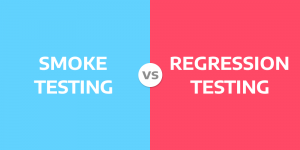
Machine learning is transforming many activities that are performed today. Its implementation in software testing has made the process easier and less time-consuming. Software testing is an essential component of the software development cycle.
Initially, the process was manual, but machine learning implementation has changed the whole landscape of software testing. Machine learning transforms software testing in ways that could not have been dreamt of decades ago. Here are different ways machine learning implementation simplifies the software testing process.
Limiting test maintenance
When software is launched, test maintenance is usually needed to check the overall performance, remove bugs and boost the software’s functionality. Various maintenance practices like software modification and updates are usually performed to enhance the customer’s experience.
Implementation of machine learning in software testing process helps continually test the software in every development phase. It ensures that the software works correctly and with very few bugs before launching the software update to the customers. The process has become shorter and more reliable as automated testing reduces the time and the possibility of mistakes, which were unavoidable while testing manually.
That means the developers are confident of the performance of the new software update due to the implantation of ML. The ML has already learned the software’s performance, and it will continuously make reports of any slightest inconsistencies.
Reduces UI based testing
Consistency is the key to creating an excellent User Interface as it increases the rate of the software’s learnability. This is achieved by creating a sense of familiarity and ensuring the screen works as the user expects it to be working. Qualities of great UI include great user control and freedom, error prevention, flexibility and efficiency of use and recognition rather than recall.
Achieving this with manual testing can be challenging and a lengthy process. Implementing machine learning in software testing enables automated testing that doesn’t necessarily require the User Interface.
The developers can run non-functional tests like unit integration, security, and performance through the ML. They can also monitor the system logs, predict the bugs with the left, and automate the self-healing process for the software.
Aid in API testing
API serves as the primary interface to application logic. That’s because the GUI-based tests are difficult to maintain with the short release cycles. The frequent changes are usually used with the Agile software development to validate the Application Programming Interfaces. It checks the functionality, performance, security and reliability of the APIs.
The manual testing process can take too much time because the Application Programming Interfaces interact with a wide range of applications within your servers and databases. The ML interacts with the features of the APIs to learn how they function.
This makes it easier to detect bugs and generate a quick report to respond to the problem. With manual testing, there are standard user inputs and outputs. Unlike the GUI tests, the API testing won’t concentrate on the look and the feel of the software application rather than the business logic layer of the application architecture.
Related Post: 13 Effective Tips for Software Testing
Automation of test case writing
Test Case refers to a set of actions performed or executed to verify a particular functionality or feature of the software application. The process has steps, preconditions, test data, and developed postcondition meant for specific test processes.
Several techniques are used for test case writing, including boundary value analysis, decision table testing, and state transition diagrams. Before the software testing process starts, the developers have to program the test scenario that will measure the software functionality across the various conditions.
In this case, writing is done for both automated and manual testing. The machine learning capabilities have eliminated the need for manual test case writing, and the developer only points at the software that needs the test.
Improves accuracy
In software testing, accuracy is the closeness of a measured value to the standard or known value. The software’s accuracy depicts its ability to provide the required, coordinated results. Precision is not dependent on accuracy.
Manual software testing is prone to many errors that often lead to multiple setbacks when using the software. That’s because the manual process has many causes that are too tedious and repetitive. This causes loss of interest and focus by the testers, which leads to some sectors being done poorly.
There can also be a possibility of misunderstanding and misinterpretation of the test plans’ details, leading to wrong conclusions and actions. Machine learning allows automation of most processes, eliminating human error and improving accuracy. Repeated tasks will be performed better and recorded more accurately.
It enhances automation testing
Whenever a new code is introduced into the existing code, the possibility of destabilizing is too high. That’s why developers perform quality assurance tests repeatedly to ensure that the code is stable. Miscommunication of one of the requirements for the testing process is one of the common problems that lead to code defects.
There can also be programming errors and obsolete automation scripts. The more the new features, the higher the number of quality assurance tests, and at some point, this may overwhelm the testers.
With automation, there is a need for comprehensive testing repeatedly performed with ML capabilities. Machine Learning checks the software’s features and adapts to them, making the automation process easier. This improves the whole process of automation testing through case-by-case testing.






